
Zuheros, the memorable view
Glimpsed from afar, the rocky nature of this village on The Route of the Caliphate lets us know in advance the beauty of the place and its marvellous surroundings.
Halfway along the road that ascends at a crawl over karstic terrain towards the shrine of the Virgen de las Sierra’s sanctuary, a path begins to descend among tooth-like limestone rocks to the polje of La Nava. Perhaps it has been always named like this, nava or navazo, but this is the technical language made by the guides of our own times.
Through the dividing part of this open space, this nava, navazo or polje, as it is commonly known, water runs gurgling through a presumed stream, as it tricks the walker, for it is also hidden under the grass of the meadow. This might be the reason why, since only heaven knows when, people have called it “Bailón” (Dancer), but it is thanks to it that this inordinate meadow takes on the hue of lilacs due to the colour provided by the myriads of flowers, which emerge as the fog clears up.
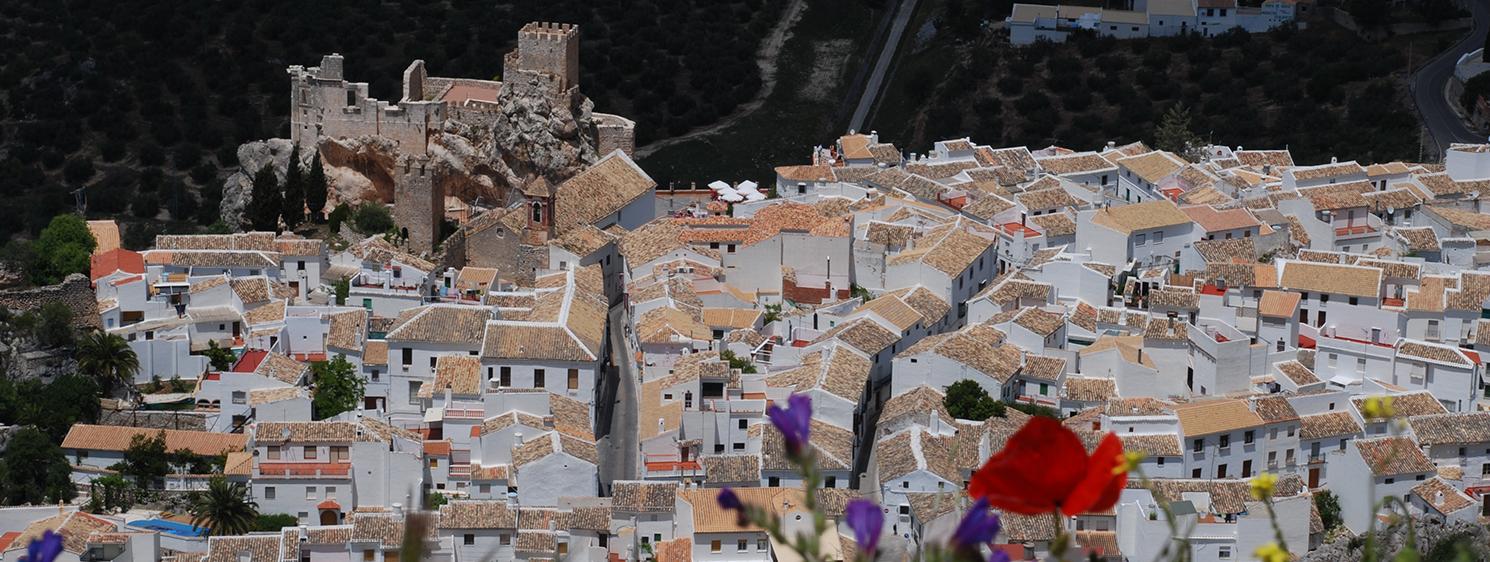
Beyond, in the background and close to the edge, the Chorreras dump the water of their cascades into another stream, a tributary of the Bailón with its gall oaks, ash trees and poplars taking over in a terrain that definitively has lost its flatness and which, as the green path of the Marcheniega goes on, becomes more and more tangled, almost wild, until it resolutely enters a canyon at the same time as the river plunges again in the abyss.
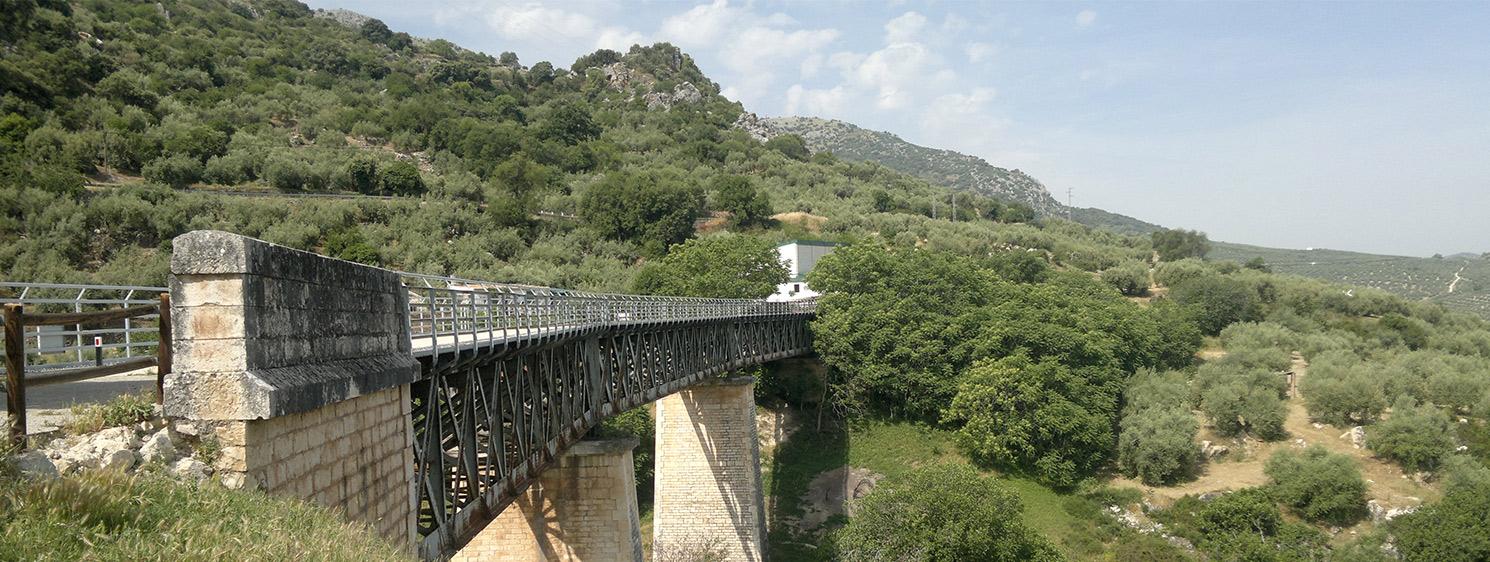
After a long walk amid embankments, in the far-off distance like a postcard, appears, like a white mountain crowned by a castle, standing in an ever-unstable balance at the summit of its rock, facing the other one, which hosts the Cueva de los Murciélagos (Cave of the Bats).
This is the end of the Subbética mountain range; we are in one of those spots that were natural borders since times immemorial (no less than six or seven millennia). Therefore, here cultures do not disperse but overlap, piling up in the same way as does population.
The Cave of the Bats might have been, in any mythological account, the place to descend into the underworld. However, raised at the beginning of that countryside it is, in reality, a voyage or passageway to the seed of the very Palaeolithic, in the heart of the Andalusian countryside.
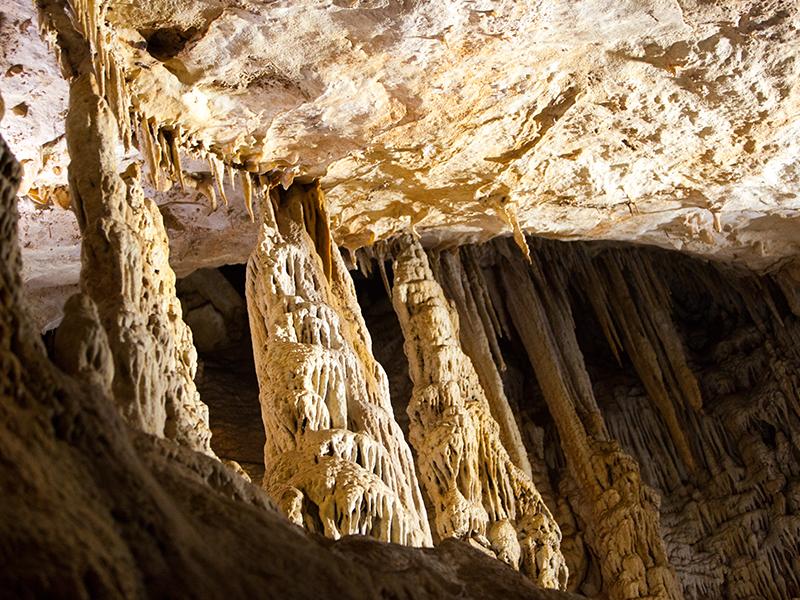
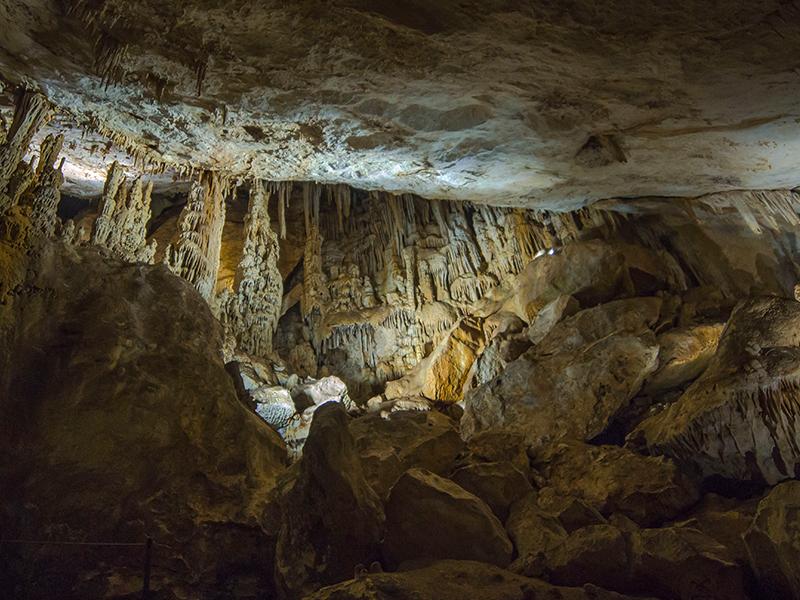
Death did not live here, but life. Primitive hands created primitive instruments, painted figures of animals, used items of pottery… they lived here to make, later, life possible for others, and then others. This is how Romans arrived and later ̶ after its decomposition ̶ so did al-Andalus; throughout several centuries, this was the most shifting border in the history of Spain. The fortress, with its spiked tower, is the fruit of it. The fortress, with its spiked tower, is the fruit of it.
Ramón Carande who, like Caro Baroja, knew about everything, dedicated some pages to one of the small studies on this convulsive or, perhaps, fertile time, although he depicted it with such bright colours that even today, under the warm sun of an awakening spring we can imagine it crowded with renegades, people who changed their beliefs, hit men, double or simple spies, small lords who moved in fighting one side or the other depending on their interests: this is what resulted from the flexibility of a Castile carried by Ferdinand III to the extreme.
That was the Castile that later had to witness, actively or passively, the war between Alphonso X and his sons, that of Peter of Castile against his stepbrothers, the Trastámaras as a result of continuous regencies due to their underage sovereigns, while in the little Granada of the Nasrids rule lay in the hands of powerful Jewish, because the gold roads of Sudan were still open.
It is Castile, or Granada –that of the Guzmanes, the Cerdas, the Abenzaides or the Abencerrajes ̶ of the childhood of Juan Ruiz’s, the one who later was to be that Archpriest of Hita who left us portrayals of it down to the smallest details. Memoires of the Archpriest come to my mind along that path that brought us here: the Marcheniega; its suffix being the same as in “nocherniegos”(people who wander at night) students and other “andariegos” (persons who walk much), for whom the poet composed his rhymes.
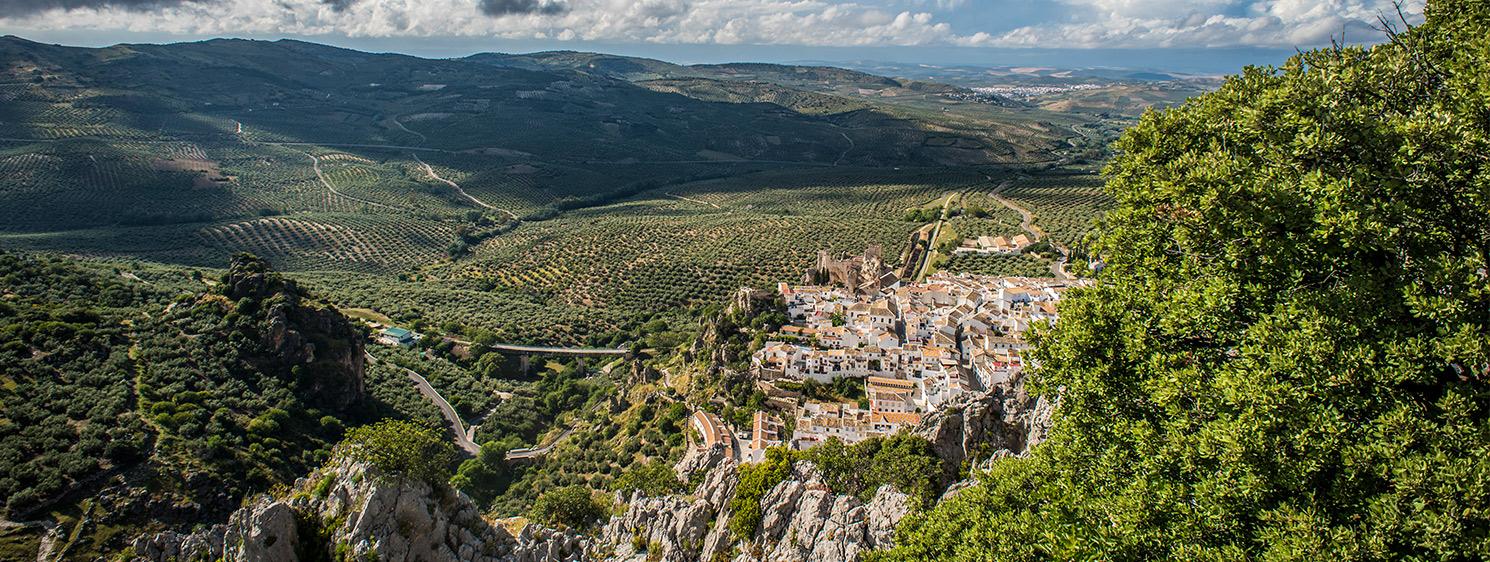
While yesterday Zuheros was on the border of a never-ending battle, is today a wonderful watchtower from which to behold the Cordoban countryside, once one gets over the muscle soreness from walking up the steep slopes. Wars first brought here the powerful House of Aguilar, which was Portuguese before being Cordoban, used as an exchange of payment for kings in need of help and ad hoc alliances, the state in the end of the family of the Great Captain of the Catholic Monarchs, in the battlefields of Italy.
However, after king Boabdil was relegated to his small kingdom in the Granadan region of La Alpujarra, the net of battle was now cast afar, in another peninsula; there was no need of fortified towers with protective corridors; the barbicans and lift gates were useless and, besides, nobody wanted them to work. Great surnames, mistily evoking the broken dreams of the wise Moor of Fray Luís de León’s poem: “were shaped in palaces of rich ceilings and sumptuous façades.”
The writer Luque Requerey writes about the great parties celebrated in the 16th century in the southern area of this province, offered by some lords to others who arrived ̶ perhaps the queen or the king too ̶ where their Morisco vassals were ordered to wear their antique clothing despite being prohibited by law: almalafas and candoras (a sort of long dress worn by Moors) or the zaragüelles (baggy long breeches) tightened with richly embossed belts or brightly coloured silk bands. These gatherings served to forge an empire which, despite being named “Roman” by Charles V, was more in tune with caliphs than with popes.
It was then the Fernández de Córdoba changed the castle in the fortress to appear as belonging to
“… the proud great men of the estate and being by the savvy Moor in jasper supported.”
In Zuheros everybody still talks about that palace; it is mentioned in every guide, always under the subtitle of “Renaissance style” even if all that stands is some haughty wall embedded in the rocks and in the arbitrary twists of time carved by wind, a true natural work of art that runs counter, by just a glance, to those who state that art can only be the result of a project.
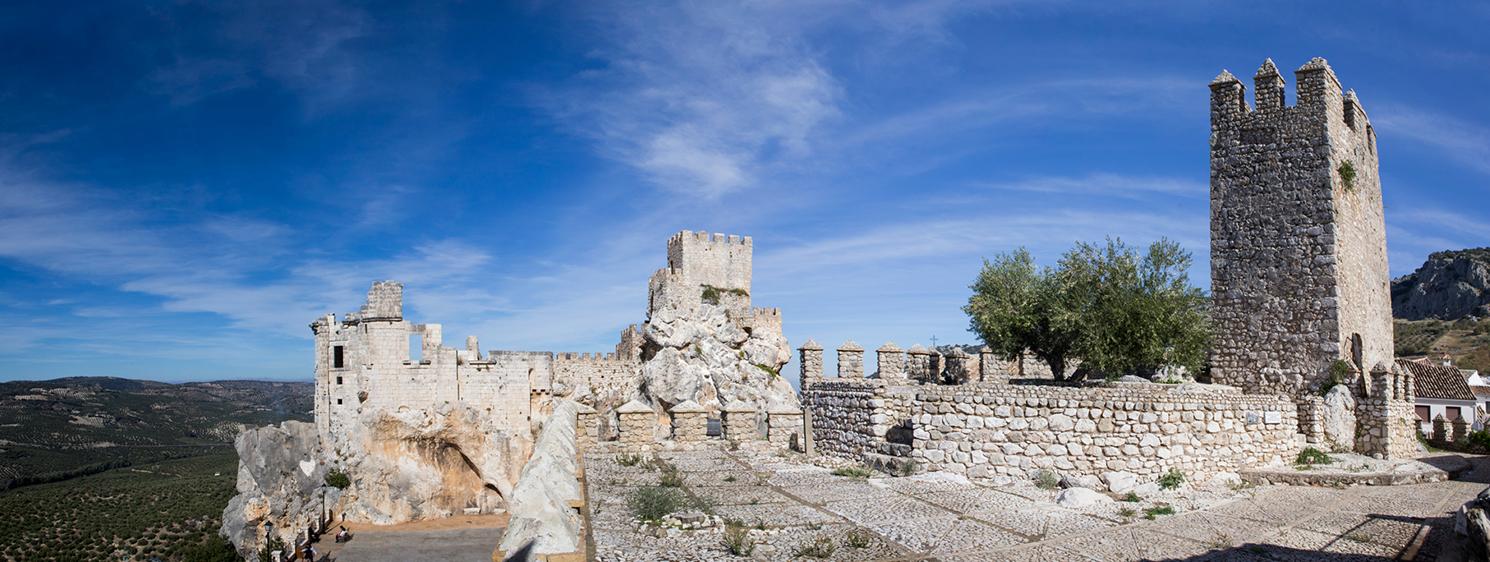
The palace’s architectural elements had not even the bad luck that those from the Duke of Marchena had, which was preserved coarsely here and there, nor that of Vélez Blanco which stands amid the Metropolitan Museum of New York. From those that were built here nobody knows their whereabouts.
In the same way, the parish church of Virgen de los Remedios stands almost next to it. Perhaps a mosque was formerly in the same place, but nothing remains from it, as the very church, from the 17th century, has undergone many changes throughout its long history.
Inside, bearing the strange duality of popular Andalusian religiosity, the patron image centres the late Baroque altarpiece, although it occupies a minor place with respect to other representation, the Virgen del Rosario, who is dressed in courtly clothes from the 16th century, maybe like one of those ̶ or perhaps the same one ̶ worn by any lady who attended the lavish parties of the time.
This was due to the change of lordship in the 18th century in the village, and it was the Marquises of Algarinejo who took ownership of these houses, these streets and the people who inhabited them, who wearily worked in the fields and performing those parties that today exist only in the memory of another memory: the recollection we cherish of the hermitage of the campanilleros de la aurora .
Zuheros is no longer the poor village as described in dictionaries and travel guides of the 19th century, a time when the scarce wool looms that remained were consigned to a fatal decay. Today, not wanting to grow much, proud of its olive oil and its cheeses and to referring to its name as in Al-Andalus times, Suhayra, it has turn into a sort of central amphictyony among the big cities that surround it which can be seen, very close, from the balcony of the restaurant where we make a stop for refreshment. The old name, regained again in our days, relates people with the plain, near to Fuentevaqueros, that poet Federico García Lorca loved so much: Zujaira. Even the verses of his youth fit it well: Even the verses of his youth fit it well:
In the green olive grove on the hill
There is Moorish tower
The colour of your peasant skin
That tastes of honey and dawn
By Antonio Zoido. Author

